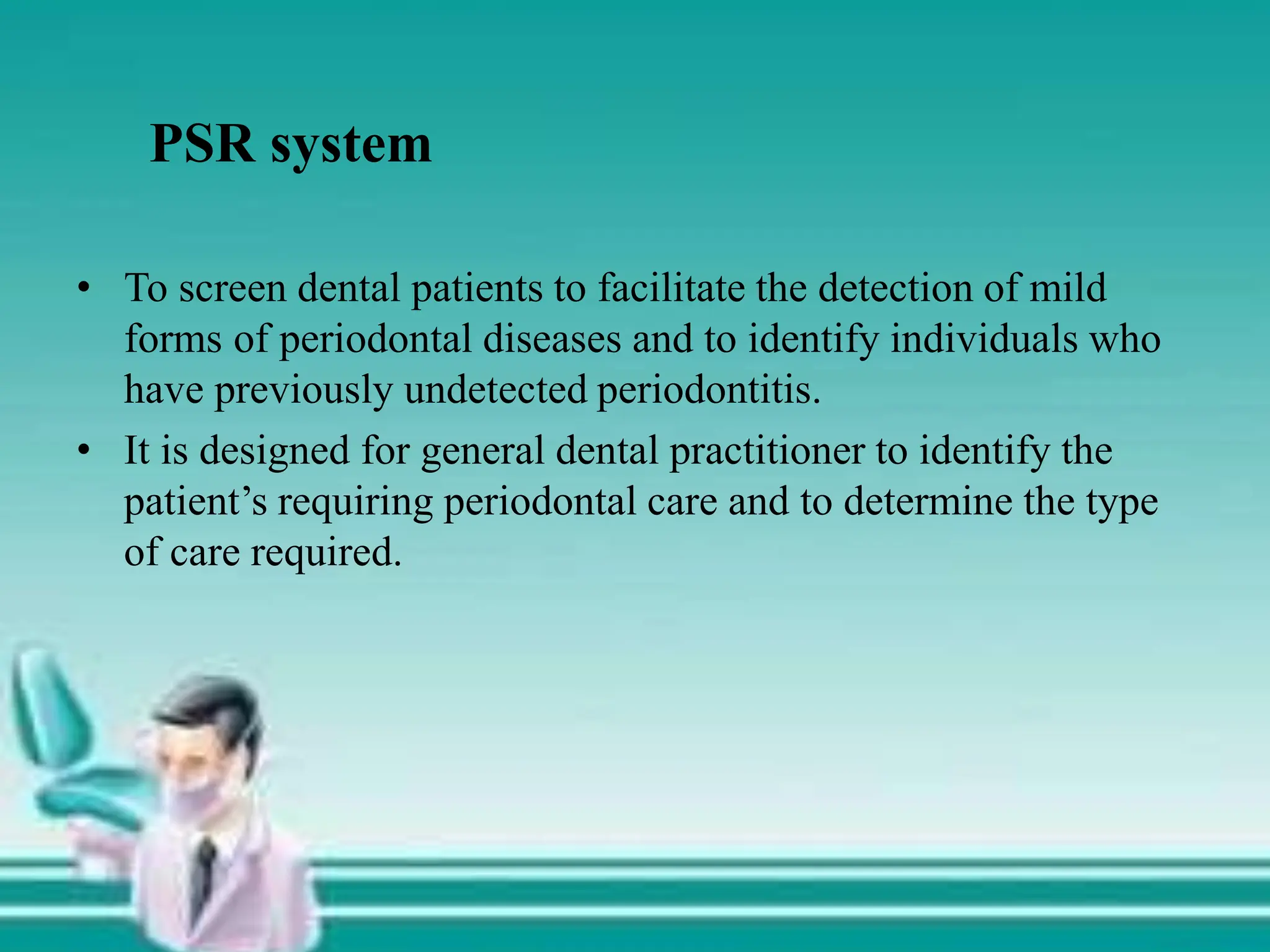The document discusses advances in diagnostic aids for periodontal disease, highlighting limitations of conventional methods and emphasizing new techniques in clinical, radiographic, microbiological, and immunological assessments. It details various diagnostic modalities, including advanced probes, digital radiography, and molecular biology techniques, to enhance accuracy in identifying periodontal conditions. Ultimately, the focus is on disease prevention, early detection, and tailored treatments to improve patient outcomes.























































































